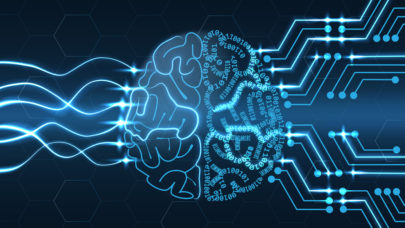
Quantum Monte Carlo at Exascale Could Be Key to Finding New Semiconductor Materials
September 27, 2021
Researchers are urgently trying to identify possible materials to replace silicon-based semiconductors. The processing power in modern computers continues to in Read more…

ISC 2021 Keynote: Thomas Sterling on Urgent Computing, Big Machines, China Speculation
July 1, 2021
In a somewhat shortened version of his annual ISC keynote surveying the HPC landscape Thomas Sterling, lauded the community’s effort in bringing HPC to bear in the fight against the pandemic, welcomed the start of the exascale – if not yet exaflops – era with quick tour of some big machines, speculated a little on what China may be planning, and paid tribute to new and ongoing efforts to bring fresh talent into HPC. Sterling is a longtime HPC leader... Read more…

AI Systems Summit Keynote: Brace for System Level Heterogeneity Says de Supinski
April 1, 2021
Heterogeneous computing has quickly come to mean packing a couple of CPUs and one-or-many accelerators, mostly GPUs, onto the same node. Today, a one-such-node system has become the standard AI server offered by dozens of vendors. This is not to diminish the many advances... Read more…

ORNL’s Jeffrey Vetter on How IRIS Runtime will Help Deal with Extreme Heterogeneity
March 3, 2021
Jeffrey Vetter is a familiar figure in HPC. Last year he became one of the new section heads in a reorganization at Oak Ridge National Laboratory. He had been f Read more…

Let’s Talk Exascale: ECP Leadership Discusses Project Highlights, Challenges, and the Expected Impact of Exascale Computing
August 19, 2020
In this special episode of the Let’s Talk Exascale podcast from the US Department of Energy’s (DOE’s) Exascale Computing Project (ECP), the members of the Read more…

AI is the Next Exascale – Rick Stevens on What that Means and Why It’s Important
August 13, 2019
Twelve years ago the Department of Energy (DOE) was just beginning to explore what an exascale computing program might look like and what it might accomplish. Today, DOE is repeating that process for AI, once again starting with science community town halls to gather input and stimulate conversation. The town hall program... Read more…

DEEP-EST Stands up Cluster Module at Jülich Supercomputing Centre
May 6, 2019
European exascale efforts continued to advance with the recent standing up of the “Cluster Module” (CM) at the Jülich Supercomputing Centre (JSC). CM is on Read more…

Congress Passes DOE Research and Innovation Act
October 9, 2018
Congress recently passed the Department of Energy Research and Innovation Act (H.R.589) which essentially authorizes many existing Department of Energy activities. It also emphasizes efforts to ease and accelerate technology transfer to the private sector. Read more…

- Click Here for More Headlines

Whitepaper
Transforming Industrial and Automotive Manufacturing
In this era, expansion in digital infrastructure capacity is inevitable. Parallel to this, climate change consciousness is also rising, making sustainability a mandatory part of the organization’s functioning. As computing workloads such as AI and HPC continue to surge, so does the energy consumption, posing environmental woes. IT departments within organizations have a crucial role in combating this challenge. They can significantly drive sustainable practices by influencing newer technologies and process adoption that aid in mitigating the effects of climate change.
While buying more sustainable IT solutions is an option, partnering with IT solutions providers, such and Lenovo and Intel, who are committed to sustainability and aiding customers in executing sustainability strategies is likely to be more impactful.
Learn how Lenovo and Intel, through their partnership, are strongly positioned to address this need with their innovations driving energy efficiency and environmental stewardship.
Download Now
Sponsored by Lenovo
Whitepaper
How Direct Liquid Cooling Improves Data Center Energy Efficiency
Data centers are experiencing increasing power consumption, space constraints and cooling demands due to the unprecedented computing power required by today’s chips and servers. HVAC cooling systems consume approximately 40% of a data center’s electricity. These systems traditionally use air conditioning, air handling and fans to cool the data center facility and IT equipment, ultimately resulting in high energy consumption and high carbon emissions. Data centers are moving to direct liquid cooled (DLC) systems to improve cooling efficiency thus lowering their PUE, operating expenses (OPEX) and carbon footprint.
This paper describes how CoolIT Systems (CoolIT) meets the need for improved energy efficiency in data centers and includes case studies that show how CoolIT’s DLC solutions improve energy efficiency, increase rack density, lower OPEX, and enable sustainability programs. CoolIT is the global market and innovation leader in scalable DLC solutions for the world’s most demanding computing environments. CoolIT’s end-to-end solutions meet the rising demand in cooling and the rising demand for energy efficiency.
Download Now
Sponsored by CoolIT
Advanced Scale Career Development & Workforce Enhancement Center
Featured Advanced Scale Jobs:
HPCwire Resource Library
HPCwire Product Showcase
© 2024 HPCwire. All Rights Reserved. A Tabor Communications Publication
HPCwire is a registered trademark of Tabor Communications, Inc. Use of this site is governed by our Terms of Use and Privacy Policy.
Reproduction in whole or in part in any form or medium without express written permission of Tabor Communications, Inc. is prohibited.
























